Best of the best: The top 10 No. 8s in Super Rugby 2021

As the Super Rugby Aotearoa, Super Rugby AU and Super Rugby Trans-Tasman competitions inch closer to kick-off, a panel of RugbyPass writers have taken it upon themselves to rank the best players across New Zealand and Australia in each position.
Some have gone for a statistical approach, while other have trusted their gut, but the end result has yielded a list of the top 10 players per position.
We have already revealed who we believe to be the best fullbacks, wings, midfielders, flyhalves and halfbacks throughout Australasia, but now we turn our focus to the No. 8s.
The writer-by-writer rankings will soon be available on Instagram, but here is the overall rankings that have been calculated as an average of the five scribes’ lists.
1) Ardie Savea (Hurricanes)
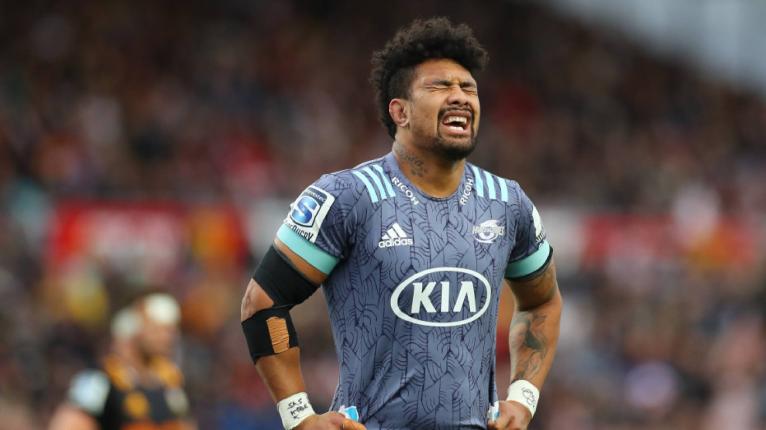
There are few loose forwards worldwide who are as hard to bring to the ground due to their sheer determination as Ardie Savea.
Possessed with a monstrous leg drive and powerful running ability, the 27-year-old also boasts an outstanding work ethic and is equally adept on the defensive side of the ball – whether that be through his tackling or ability at the breakdown – as he is on attack.
All that, combined with his leadership at stature at the Hurricanes, has made him an influential figure not only in the Kiwi capital, but, evidently, throughout all of Super Rugby.
2) Harry Wilson (Reds)

After emerging as one of the best young talents Australia had to offer in 2020, the secret is out about how good of a player Harry Wilson is.
A behemoth of a man who isn’t afraid to impose his physical presence on others, the 21-year-old exploded onto the scene last year with his blockbusting ball-running and big-hitting defence.
Both of those attributes were on full show as Wilson featured regularly for the Reds and Wallabies, and much of the same will be expected of him over the coming weeks.
3) Hoskins Sotutu (Blues)
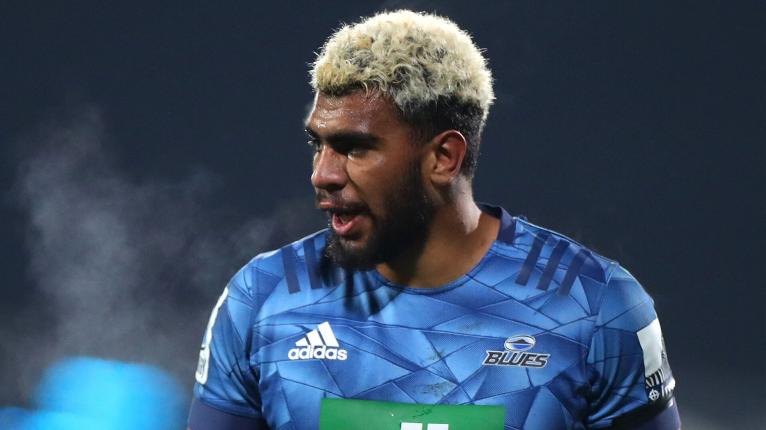
There wasn’t much separating the top three No. 8s in our collective rankings, but the fact that Blues standout Hoskins Sotutu is in third place is indicative of how much talent there is in this position across Super Rugby.
Another youngster who came to life emphatically last year, the 22-year-old was a key component of the Blues’ renaissance as part of a fit and firing forward pack that had long underperformed.
Whether it’s with ball in hand, in the defensive line or at the lineout, Sotutu stands as a considerable threat for any opposing Super Rugby side, and it will be intriguing to see him and Wilson go toe-to-toe over the next decade.
4) Pete Samu (Brumbies)
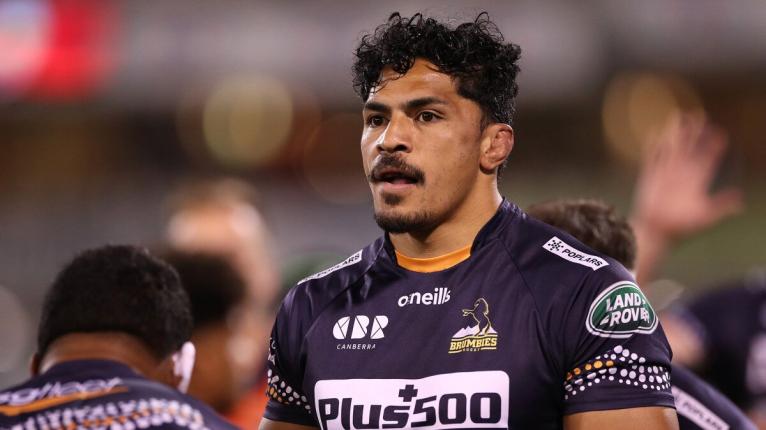
A two-time title-winning loose forward at the Crusaders, Pete Samu has gone from strength-to-strength since returning to his homeland on the opposite side of the Tasman.
Born in Melbourne and having also lived in Brisbane and Sydney, it’s in Canberra where the 29-year-old has found a home for himself in Australia, becoming a core member of a strong Brumbies outfit that claimed the Super Rugby AU title last year.
Like any good No. 8, Samu is a powerhouse on both sides of the ball, with his running game particularly eye-catching, so it will be little surprise to see the Brumbies go well in 2021 for as long as the 10-test Wallaby is involved.
5) Isi Naisarani (Rebels)

It’s been a whirlwind adventure in Australian rugby for Isi Naisarani since he first ventured to his adopted nation from Fiji in 2016.
Year-long stints with the Western Force and Brumbies exemplified how lethal of an attacking weapon the 25-year-old can be, and it’s the Melbourne Rebels who have been reaping the rewards of Naisarani’s offensive prowess since 2019.
Standing at 1.95m, Naisarani also offers both the Rebels and Wallabies a safe option at the lineout, so it’s unsurprising to see him rate so highly on our rankings given the multi-faceted threat he poses.
6) Whetukamokamo Douglas (Crusaders)
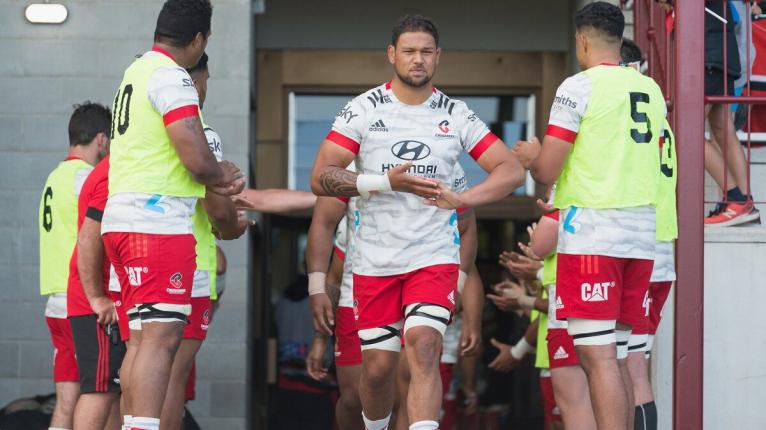
A veteran of New Zealand rugby, Whetukamokamo Douglas has become a staple of the Crusaders’ forward pack since debuting for the Christchurch franchise in 2017.
Since then, the 29-year-old has played over 30 times for the side, with a brief spell in Italy with Benetton Treviso interrupting his impact on Scott Robertson’s squad.
Now entering his second season with the Crusaders without Kieran Read blocking his path for starting honours, expect Douglas to throw his weight around regularly at Orangetheory Stadium in 2021.
7) Kazuki Himeno (Highlanders)

With COVID-19 limiting the induction of overseas stars into Super Rugby this year, the Highlanders will undoubtedly be stoked to have Brave Blossoms star Kazuki Himeno in their ranks this season.
The 26-year-old was a standout for Japan at the 2019 World Cup as he helped them reach the quarter-finals of the tournament for the first time in their history through his heavy ball-carrying, tremendous work ethic and safety at the set piece.
Capable of filling all three loose forward roles, as well as in the second row, Himeno won’t be available for the Highlanders until a few weeks into Super Rugby Aotearoa, but he is bound to make a mighty impact once he gets his chance.
8) Marino Mikaele-Tu’u (Highlanders)
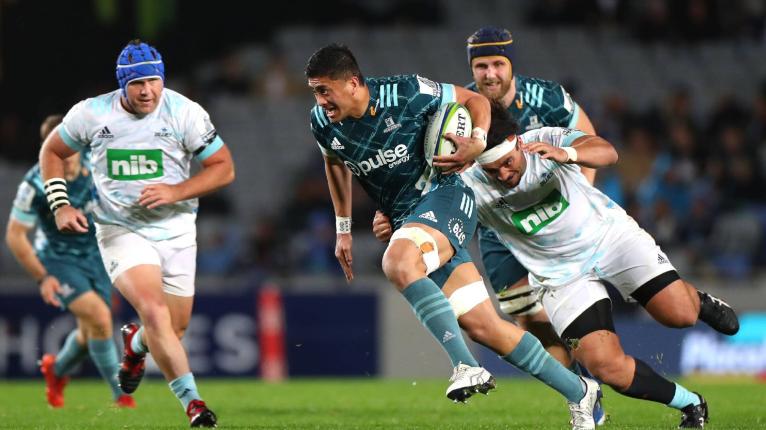
Like Wilson and Sotutu, 2020 was a breakout season for Highlanders youngster Marino Mikaele-Tu’u, who spent the prior couple of seasons beforehand biding his time behind the likes of Luke Whitelock and Elliot Dixon.
The 23-year-old’s patience was well-rewarded, though, as he proved himself as one of New Zealand’s best attacking forwards throughout Super Rugby Aotearoa.
While that earned him the starting No. 8 role all of last year, such luxuries will be harder to come by in 2021 given the Highlanders’ strong off-season recruitment in the loose forwards.
However, if given the chance to impress early on, it may be the new and returning faces who will have the uphill battle of trying to snare a starting role of Mikaele-Tu’u.
9) Liam Squire (Highlanders)
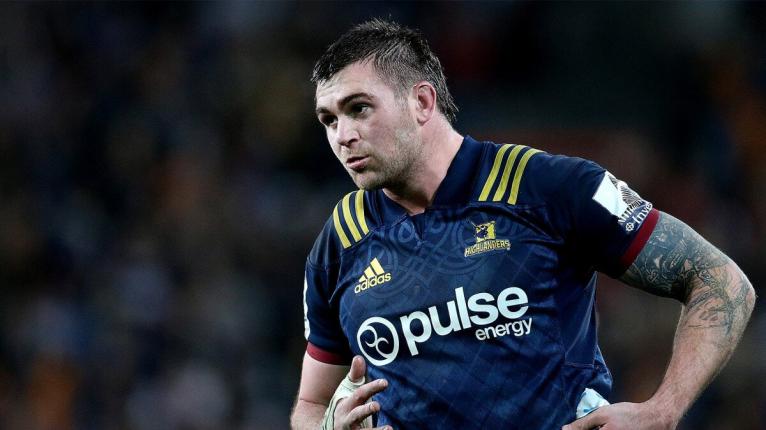
Remarkably the third Highlanders player to feature on this list, Liam Squire has returned to the franchise he established himself as New Zealand’s heir apparent to Jerome Kaino as the bone-rattling enforcer of the All Blacks.
The only problem was the 29-year-old wasn’t in the right frame of mind or physical condition after three impressive years between 2016 and 2018, which led to a move to Japan ahead of the 2020 Top League season.
Now refreshed and ready for action, Squire – who is more often a blindside flanker, but had his vote split between here and the flanker rankings by our writers – is primed to reclaim his place in the national squad.
10) Tom Sanders (Crusaders)
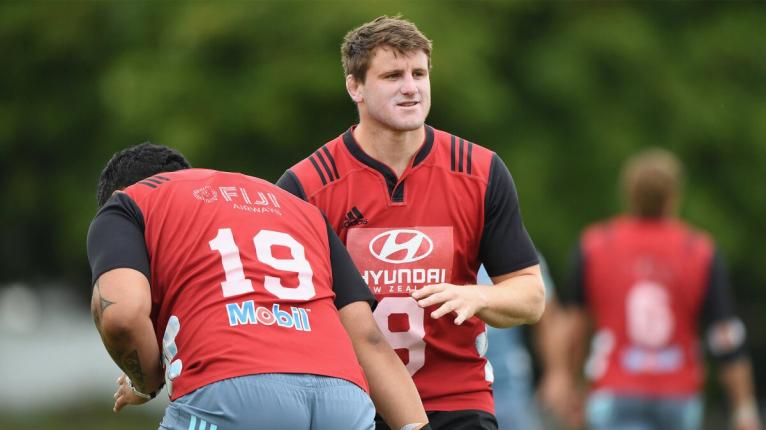
After moving to the Crusaders from the Chiefs in 2018, Tom Sanders has been in a tight tussle with Douglas for the No. 8 jersey since the defection of Read to Japan at the end of 2019.
Who is the better option at the back of the scrum is up for debate, but it has to be said the 27-year-old caught the eye for the reigning Super Rugby Aotearoa champions last year, to the point where he earned selection for the North vs South clash.
Unfortunately, though, a cheek fracture has left Sanders sidelined for between eight-to-10 weeks, meaning he likely won’t be sighted until the Super Rugby Trans-Tasman competition.
Honourable mentions
As is usually the case, a select few players were nominated for these rankings by individual writers but failed to make the final cut.
However, some of these names – such as Akira Ioane (Blues) and Cullen Grace (Crusaders) – are likely to feature on the flanker rankings, given that’s where they predominantly play.
Others who were put forward for consideration included Pita Gus Sowakula (Chiefs), Glasgow Warriors-bound Jack Dempsey (Waratahs), Gareth Evans (Hurricanes), Luke Jacobson (Chiefs), Brynard Stander (Force) and Rob Valetini (Brumbies).










































Comments on RugbyPass
Billy's been playing consistently well for 2 - 3 seasons now and deserves a look in at the top level. Ioane and ALB are still first choice but there needs to be injury cover and succession. His partnership with Jordie gives him first dibs you'd think. Go the Hurricanes.
3 Go to commentsIt’s not up to Wales to support Georgian Rugby. That’s up to International Rugby and Georgia. I sympathise with Georgia’s decent attempt to create this fixture. But for Wales the proposed match up is just a potential stick to beat them with and a potential big psychological blow that young Welsh team doesn’t need. (I’m Irish BTW.)
2 Go to commentsCale certainly looks great in space, but as you say, he has struggled in contact. At 23 years old, turning 24 this year, he should be close to full physical maturity and yet there exists a considerable gap in the power and physicality required for international rugby. Weight doesn’t automatically equate to power and physicality either. Can he go from a player who’s being physically dominated in Super rugby to physically dominating in international rugby in 1 or 2 years? That’s a big ask but he may end up being a late bloomer.
28 Go to commentsIf rugby wants to remain interesting in the AI era then it will need to work on changing the rules. AI will reduce the tactical advantage of smart game plans, will neutralize primary attacking weapons, and will move rugby from a being a game of inches to a game of millimetres. It will be about sheer athleticism and technique,about avoiding mistakes, and about referees. Many fans will find that boring. The answer is to add creative degrees of freedom to the game. The 50-22 is an example. But we can have fun inventing others, like the right to add more players for X minutes per game, or the equivalent of the 2-point conversion in American football, the ability to call a 12-player scrum, etc. Not saying these are great ideas, but making the point that the more of these alternatives you allow, the less AI will be able to lock down high-probability strategies. This is not because AI does not have the compute power, but because it has more choices and has less data, or less-specific data. That will take time and debate, but big, positive and immediate impact could be in the area of ref/TMO assistance. The technology is easily good enough today to detect forward passes, not-straight lineouts, offside at breakdown/scrum/lineout, obstruction, early/late tackles, and a lot of other things. WR should be ultra aggressive in doing this, as it will really help in an area in which the game is really struggling. In the long run there needs to be substantial creativity applied to the rules. Without that AI (along with all of the pro innovations) will turn rugby into a bash fest.
24 Go to commentsSouth Africa rarely play Ireland and France on these tours. Mostly, England, Scotland and Wales. I wonder why
1 Go to commentsIt was a let’s-see-what-you're-made-of type of a game. The Bulls do look good when the opposition allows them to, but Munster shut them down, and they could not find a way through. Jake should be very worried about their chances in the competition.
2 Go to commentsHats off to Fabian for a very impressive journey to date. Is it as ‘uniquely unlikely’ as Rugby Pass suggests, given Anton Segner’s journey at the Blues?
1 Go to commentsSad that this was not confirmed. When administrators talk about expanding the game they evidently don’t include pathways to the top tier of rugby for teams outside of the old boys club. Rugby deserves better, and certainly Georgia does.
2 Go to commentsLions might take him on if they move on Van Rooyen but I doubt he will want to go back, might consider it a step backwards for himself. Sharks would take him on but if Plumtree goes on to win the challenge cup they will keep him on. Also sharks showing some promising signs recently. Stormers and Bulls are stable and Springboks are already filled up. Quality coach though, interesting to see where he ends up
1 Go to commentsAnd the person responsible for creating a culture of accountability is?
3 Go to commentsMore useless words from Ben Smith -Please get another team to write about. SA really dont need your input, it suck anyway.
264 Go to commentsThis disgraceful episode must result in management and coach team sackings. A new manager with worse results than previous and the coaching staff need to coached. Awful massacre led by donkeys.
1 Go to commentsInteresting article with one glaring mistake. This sentence: “And between the top four nations right now, Ireland, France, South Africa, and New Zealand…” should read: And between the top four nations right now, South Africa, Ireland, New Zealand and France…”. Get it right wistful thinkers, its not that hard.
24 Go to commentsHow did Penny get the gig anyway?
3 Go to commentsNice write up Nick and I would have agreed a week ago. However as you would know Cale & co got absolutely monstered by the Blues back row of Sotutu, Ioane and Papaliti and not all of these 3 are guaranteed a start in the Black jumper. He may need to put some kgs before stepping up, Spring tour? After the week end Joe will be a bit more restless. Will need to pick a mobile tough pack for Wales and hope England does the right thing and bashes the ABs. I like your last paragraph but I would bring Swinton, Hannigan into the 6 role and Bobby V to 8
28 Go to commentsThe Crusaders can still get in to the Play Off’s. The imminent return of outstanding captain Scott Barrett and his All Black team mate Codie Taylor will be a big boost.There are others like Tamaiti Williams too. Two home games coming up. Fellow Crusader fans get there and support these guys. I will be.
2 Go to commentsCant get more Wellington than Proctor.
3 Go to commentsWhy not let the media decide. Like how they choose the head coach. Like most of us we entrust the rugby system to choose. A rugby team includes the coaches. It's collective.
14 Go to commentsHi NIck, I have been very impressed with him and he seems a smart player who can see opportunities which Bobby V _(who must be an international 6_) doesn’t see or have the speed to take advantage of. If he continues to improve and puts on 5kgs then he could be a great 8. He is a bit taller than Keiran Reid at 1.93m and 111 kgs, so his skill set fits his body size and who knows where it will lead. I hope the spate of Achilles tendon issues have been dealt with by the S&C people. It’s been a very long time since Mark Loane and Kefu stood out at 8. The question is will we be able to hold onto him, if he does make it he will be pretty hot property. I disagree with the idea of letting them go to the Northern Hemisphere and then bring them back.
28 Go to commentsBilly Fulton 🤣🤣🤣🤣 garrrmon not even close
14 Go to comments